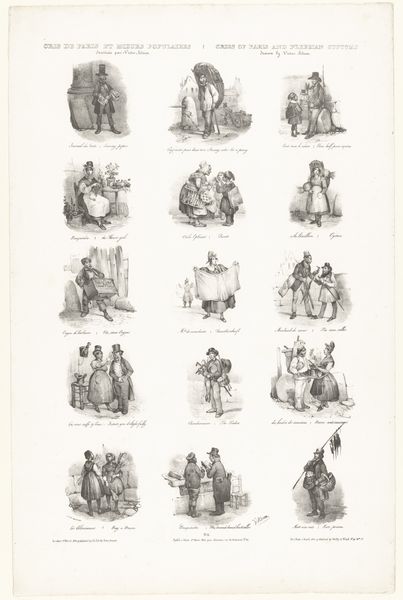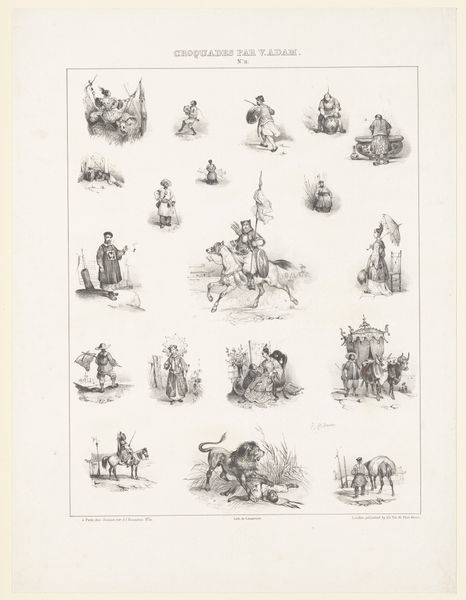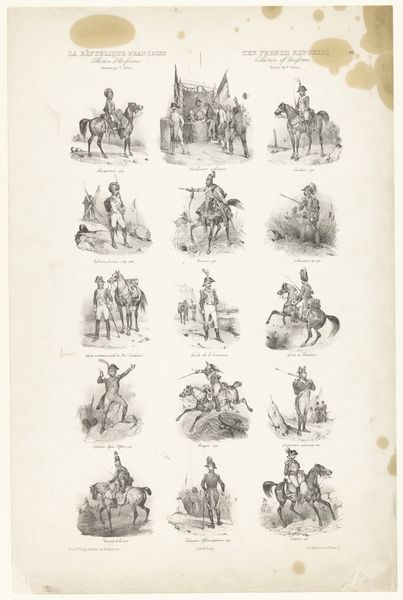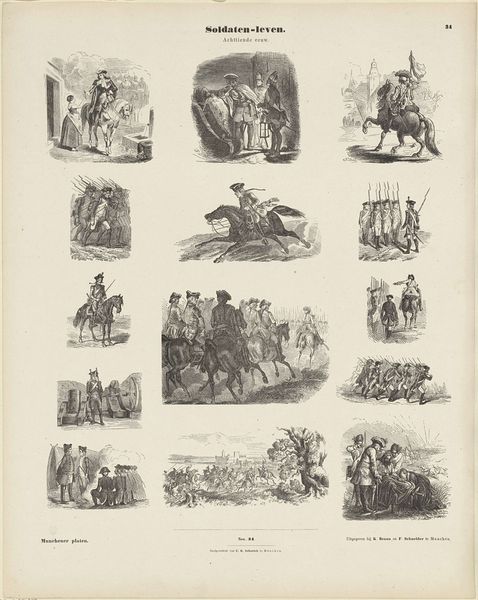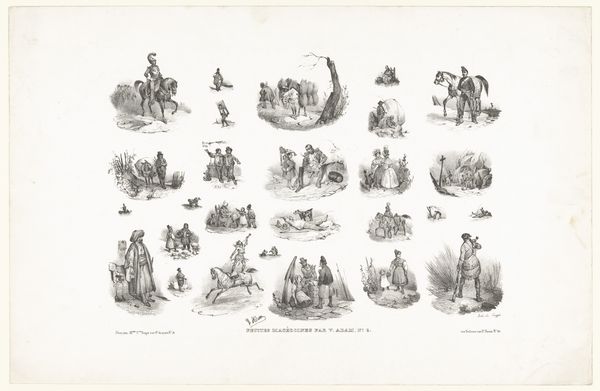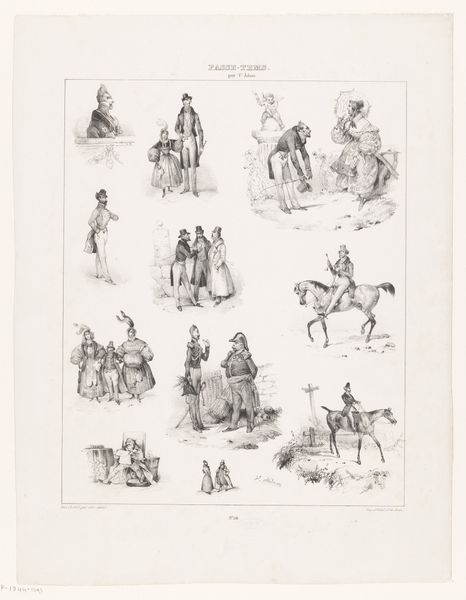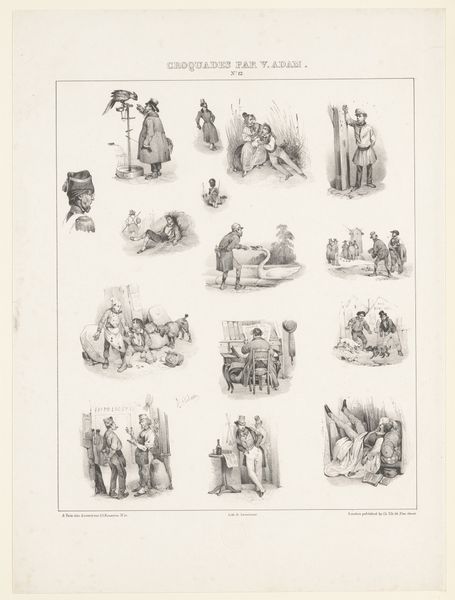
drawing, lithograph, print, graphite
#
portrait
#
drawing
#
lithograph
# print
#
figuration
#
romanticism
#
graphite
#
cityscape
#
genre-painting
#
realism
Dimensions: height 488 mm, width 320 mm
Copyright: Rijks Museum: Open Domain
Editor: This lithograph by Victor Adam, titled *Vijftien voorstellingen van Parijse straatventers*, from 1832, depicts fifteen scenes of street vendors in Paris. I am immediately drawn to the sheer variety of labor on display and how that speaks to the booming urban environment of the 19th Century. What does this focus on everyday labor tell us about the culture of the time? Curator: Precisely! The choice of lithography, a relatively new and reproducible medium at the time, is crucial. It speaks to the accessibility of these images and their potential to circulate amongst a wider audience. What does the use of a print, rather than a painting, suggest about its intended purpose? Editor: Maybe that this was meant for more widespread consumption than just the wealthy? Something for the emerging middle class? Curator: Exactly! It suggests a shift in the art market and who art was created for. By depicting street vendors, the print highlights the often-invisible labor that fueled the city's growth. The very process of mass production mirrors the labor practices of the emerging capitalist society. What relationship do you see between the romantic aesthetic of the rendering and the harder, realistic themes depicted? Editor: The romantic style gives them dignity but contrasts with the harsh lives of street vendors. Is the romanticism then being used to sort of ennoble this type of labor? Curator: Interesting question! And how might our current moment, one with even starker wealth disparities and anxieties surrounding labor, re-contextualize a piece like this? Editor: Well, I hadn't considered how relevant it still is! I will look closer at these types of historical works, considering their contemporary relevance to topics such as income inequality, social mobility, and economic pressures of labor! Curator: Indeed! Examining the material conditions of artistic production and the subject matter can provide a powerful lens through which to understand both the past and the present.
Comments
No comments
Be the first to comment and join the conversation on the ultimate creative platform.
